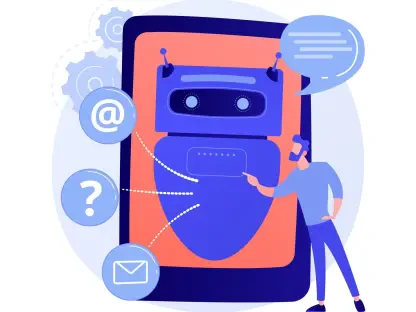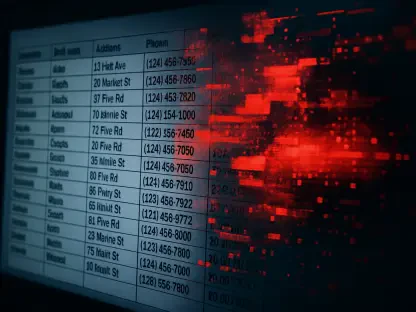Listen to the Article
AI-driven cybersecurity is the new frontline. As threat vectors diversify and digital estates balloon in complexity, security leaders are being asked to do the impossible: respond faster, scale broader, and predict threats before they happen. And automation, powered by artificial intelligence, promises to make it all possible.
Yet despite widespread adoption, confidence in AI remains uneven. While security operations centers lean into AI for threat detection, triage, and response, many enterprises still hesitate to fully automate decision-making. Why? Because trust hasn’t caught up with capability.
This article explores why that trust gap exists, what it takes to close it, and how to mature from AI assistance to AI assurance, without trading visibility for velocity.
AI is already here. Confidence isn’t.
Karpovich states that in 2025, the AI-powered SOC is transforming how companies defend against digital threats. This speaks to a growing reliance on AI-augmented detection tools. From anomaly detection engines to automated incident response platforms, AI is now embedded in nearly every tier of the security stack.
And the logic is compelling. Machine learning models can analyze petabytes of network traffic, correlate signals across domains, and flag abnormal behaviors at machine speed. For overworked security teams, this tech is a lifeline. IBM’s Cost of a Data Breach Report found that organizations with mature AI capabilities detected and contained breaches 108 days faster on average, saving $1.76 million per breach.
So why the hesitation? Because AI doesn’t just extend human ability—it changes the decision surface, and for CISOs and security engineers, trust isn’t earned by performance alone.
The automation anxiety paradox
Security automation can be both a remedy and a risk. When AI identifies an anomalous login, does it quarantine the user, lock the account, or simply alert an analyst? The wrong choice could mean downtime for legitimate users or undetected lateral movement for threat actors.
This is the paradox at the heart of AI-driven cybersecurity: automation adds speed, but speed without trust becomes risk.
Consider this:
False positives can erode analyst confidence and lead to alert fatigue.
Opaque decision-making limits the ability to audit AI logic in incident post-mortems.
Over-reliance on automation can introduce blind spots when models drift or threat actors evolve.
These concerns aren’t theoretical. A 2024 Ponemon Institute survey of 641 IT and security professionals revealed that 66% reported their organizations were using AI to detect attacks across cloud, on‑prem, and hybrid environments—but only 37% had a unified approach to managing both AI and privacy/security risks.
Trust, in this context, is both technical and cultural. And the journey to trustworthy automation starts with visibility. Here’s how you can get started:
Step 1: Make AI explainable by design
You can’t trust what you can’t understand. That’s why explainability is emerging as a core criterion for enterprise AI adoption—it is an operational necessity. Security leaders need to know:
Why did the AI flag this behavior?
What factors influenced the decision?
Can we reproduce and validate this outcome?
Vendors are responding with model transparency features, such as heatmaps, logic trees, and confidence scores. Google Chronicle, for instance, provides contextual breakdowns of security events with justifications. Similarly, Microsoft Defender leverages interpretable machine learning to show how data signals influence outcomes.
The goal is clear: make AI auditable, not inscrutable. Because visibility builds verifiability, and verifiability builds trust.
Step 2: Align automation with human authority
AI should amplify human decision-making, not override it. That’s why role-based automation is becoming a best practice.
In mature security environments, automation isn’t binary. It’s tiered:
Tier 1: Automated alerts and enrichments.
Tier 2: Human-in-the-loop decisions for high-risk events.
Tier 3: Fully automated response for known, low-risk scenarios.
This phased approach respects institutional knowledge while accelerating response. It also enables gradual trust-building: as AI proves itself in low-risk actions, its scope can expand.
Enterprises like Capital One have embraced this model, deploying AI to handle phishing triage and malware containment autonomously, while leaving privilege escalation investigations to human analysts. The key is that automation operates within a framework of human accountability, not instead of it.
Step 3: Monitor for model drift and adversarial adaptation
AI models are not static. They evolve—and sometimes degrade. Without continuous monitoring, even the best-trained models can become blind to novel attack patterns or fall victim to adversarial inputs.
That’s why model validation isn’t a one-time event. Enterprises must:
Regularly retrain models on fresh data.
Use red-teaming and simulated adversaries to test model robustness.
Deploy AI validation tools that alert when model behavior changes unexpectedly.
MITRE’s ATLAS framework offers a starting point for adversarial testing, while platforms like Robust Intelligence provide automated guardrails for detecting model drift.
In cybersecurity, trust isn’t just about what AI did right, but how quickly you can detect when it goes wrong.
Step 4: Centralize oversight and codify governance
Trustworthy automation doesn’t happen in isolation. It requires cross-functional alignment between security, compliance, data science, and executive leadership.
This is where AI governance frameworks come in. These policies define:
What data can be used to train models;
How decisions are logged and audited;
Who is accountable for oversight;
What thresholds trigger human intervention.
Many firms are formalizing these practices through AI Risk Committees and Internal Review Boards. The National Institute of Standards and Technology also offers a robust framework, guiding organizations in building transparency, fairness, and accountability into their AI workflows.
The message is simple: if you want teams to trust AI, codify that trust in policy.
The automation maturity curve
The ultimate goal isn’t to remove humans from security decisions. It’s to free them for the decisions that matter most.
The following table outlines the three stages of AI maturity in cybersecurity operations—from assistant to actor—highlighting how AI evolves from alert generator to autonomous responder as trust and system integration deepen.
AI Role | Maturity Stage | Automation Type |
Alert generator | Early adoption | AI-augmented detection |
Guided analyst | Operationalized | Human-in-the-loop response |
Autonomous actor | Mature SOC | AI-driven remediation |
But to make that leap, you need more than confidence. You need structure, as described in this table:
In early-stage environments, AI acts as an assistant: | In more mature systems, AI becomes an actor: |
|
|
|
|
|
|
The transition from assistant to actor requires more than technical capability. It requires shared confidence. And that confidence comes from clear explanations, aligned authority, robust monitoring, and formalized governance.
You’ll get there…
Too many enterprises treat AI security as a product to deploy rather than a discipline to develop. But the truth is, AI maturity is trust maturity. And building that trust is a lifecycle.
This article has mapped the four pillars of trustworthy AI-driven security: explainability, authority alignment, model monitoring, and governance. It’s no coincidence that these capabilities aren’t technological alone—they’re cultural and procedural.
Security leaders must reframe AI as an evolving operational partner because it is a decision-maker, and decision-makers need to be accountable, interpretable, and aligned with enterprise priorities.
And if your automation feels risky, erratic, or opaque, it’s not too late to fix what broke. But first, you have to rebuild the trust.









